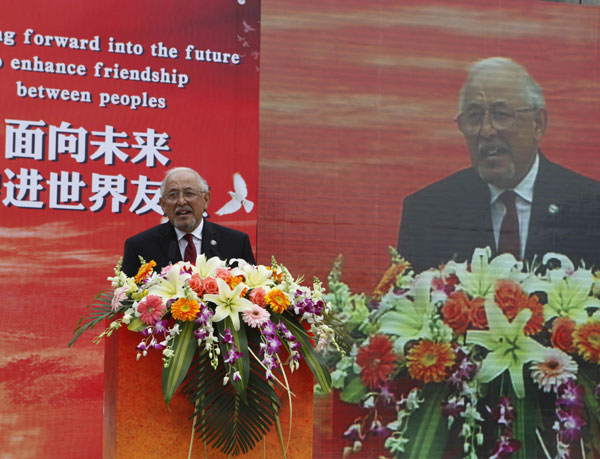 |
|
President of the Flying Tiger Historical Organization Major General James Whitehead Jr. addresses at the opening ceremony of the Flying Tiger Heritage Park in Guilin, South China's Guangxi Zhuang autonomous region, March 28, 2015. [Photo by Huo Yan/asianewsphoto] |
In the ensuing six months, the Flying Tigers fought more than 100 combats, shooting down 272 enemy aircraft and destroying another 225 on the ground, which earned them great appreciation and praises.
"History is the best textbook. The park will remind people of the joint contribution and sacrifices made by both Chinese and Americans 70 years ago," said Peng Qinghua, party chief of Guangxi Zhuang Autonomous Region.
"It's very disturbing that you ask anybody on the street, and they don't know a thing about this part of the history," said 92-year-old Maj. Gen. James Whitehead Jr., a Flying Tiger veteran who flew the "Hump" back and forth during the war.
The Hump, or the "death route" over the Himalayan mountains was operated jointly by China and the United States from 1942 to 1945 to transport military supplies from India to Southwest China.
More than 500 planes crashed along the Hump, claiming the lives of over 1,500 Chinese and American pilots. The route was clearly seen from above as the aluminum trails for the wreckage of crashed planes glittered in the sunlight.
"I certainly hope that the heritage park can raise the awareness of the youth and promote the friendship between the two countries," Whitehead said in Saturday's ceremony.
"As we honor their memory, let us look to the Flying Tigers for inspiration, as a shining example of the great things that can be accomplished when Americans and Chinese join together in a spirit of mutual friendship and support," US Consul General Jennifer Zimdahl Galt said in a speech.